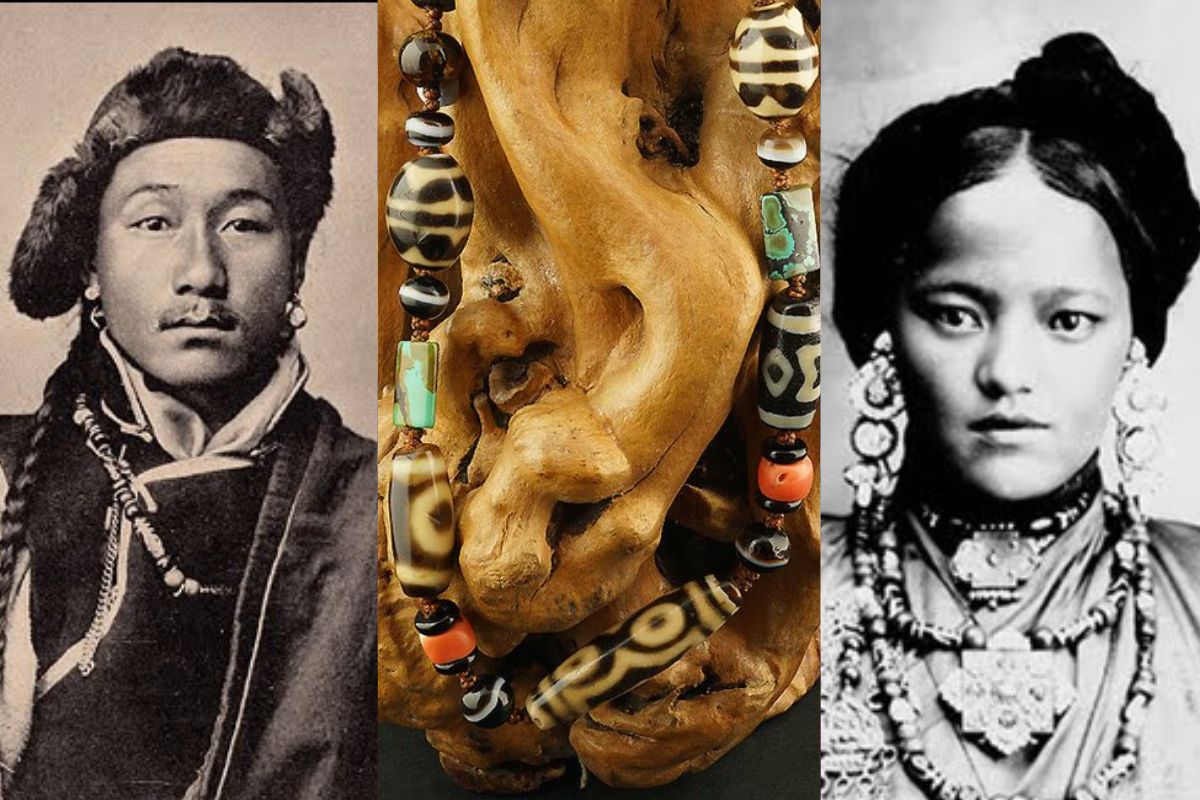A wealth of rich cultural heritage can be found in the wide expanse of the Tibetan Plateau amidst snow-capped mountains and tranquil valleys. The Thirteen Eye Dzi Bead, a beautiful treasure that has captured people’s imagination for generations, is one of the most valued assets of this ancient history.
Dzi beads, often called “heaven’s beads”, are seen as a sign of luck and protection and are thought to have originated in ancient Tibet. With each eye signifying a different god or divinity, the Thirteen Eye Dzi is regarded as one of the most potent of all Dzi beads.
Advertisement
According to Tibetan mythology, there are several myths and mythology about their origins and use. Among these, one of the stories claim that these beads were supposedly created from the tears the deity Avalokiteshvara shed over the suffering of sentient beings as a result of the beat originating consisting of healing powers.
Advertisement
Tibetans also believe that the Dzi are of supernatural origin and that they pick their owners and will not stay with someone who does not adhere to religious beliefs. Others claim that demi-gods used Dzi beads as jewellery, and that if they were broken, the bead lost its powers and was abandoned. There are additional stories about beads being insects that lived in the dirt and changed to stone when touched by a human hand.
These claims support the concept that the beads are supernatural creatures capable of protecting their owners from any harm and sickness. Others believe the beads may be used against devils and bad spirits, as well as to protect against misfortune, disease, and unexpected death. According to one of the belive Traditional Tibetan Medicine treats epilepsy with powder made from intact beads mixed with other ingredients and guard against misfortunes and negativity.
Dzi beads have mystical designs on them and are an essential aspect of Tibetan culture. The unusual designs on Dzi beads, which refer to shamanism and witchcraft, are said to date back to the period of the Bön cult. Each of the thirteen eyes on the Thirteen Eye Dzi represents a distinct element of Buddhist mythology, making it a special and intricate bead. For instance, the second eye represents the goddess of mercy and compassion, while the first eye represents the deity of riches and prosperity. Several significant gods, including the deity of knowledge, the goddess of fertility, and the god of longevity, are represented by the remaining eyes.
Different number of beads
There are different types of beads that are used as remedies for different conditions. As per cultural beliefs, a thirteen-eyed Dzi bead encourages calm and tranquility, whilst a fifteen-eyed Dzi would bring the user luck. A twenty-one-eyed Dzi grants wishes and delivers fame and prosperity. Despite their relationship with spirituality, Dzi beads may be used by anybody as they are not affiliated to any religion and their main purpose is to benefit humans. Dzi beads were frequently used in costume jewellery and may be found on certain women’s decorations.
These beads are highly valued in Tibetan culture and are frequently passed down from generation to generation as a family legacy. They are thought to have the capacity to offer peace, wealth, and protection to those who wear them, and are regarded as a symbol of good fortune and luck.
Tibetans have long placed a high value on jewellery. It is considered a status symbol and has enormous religious importance, with even the poorest of households maintaining some beads as amulets to protect the wearer from calamities and negativity.
Advertisement
















